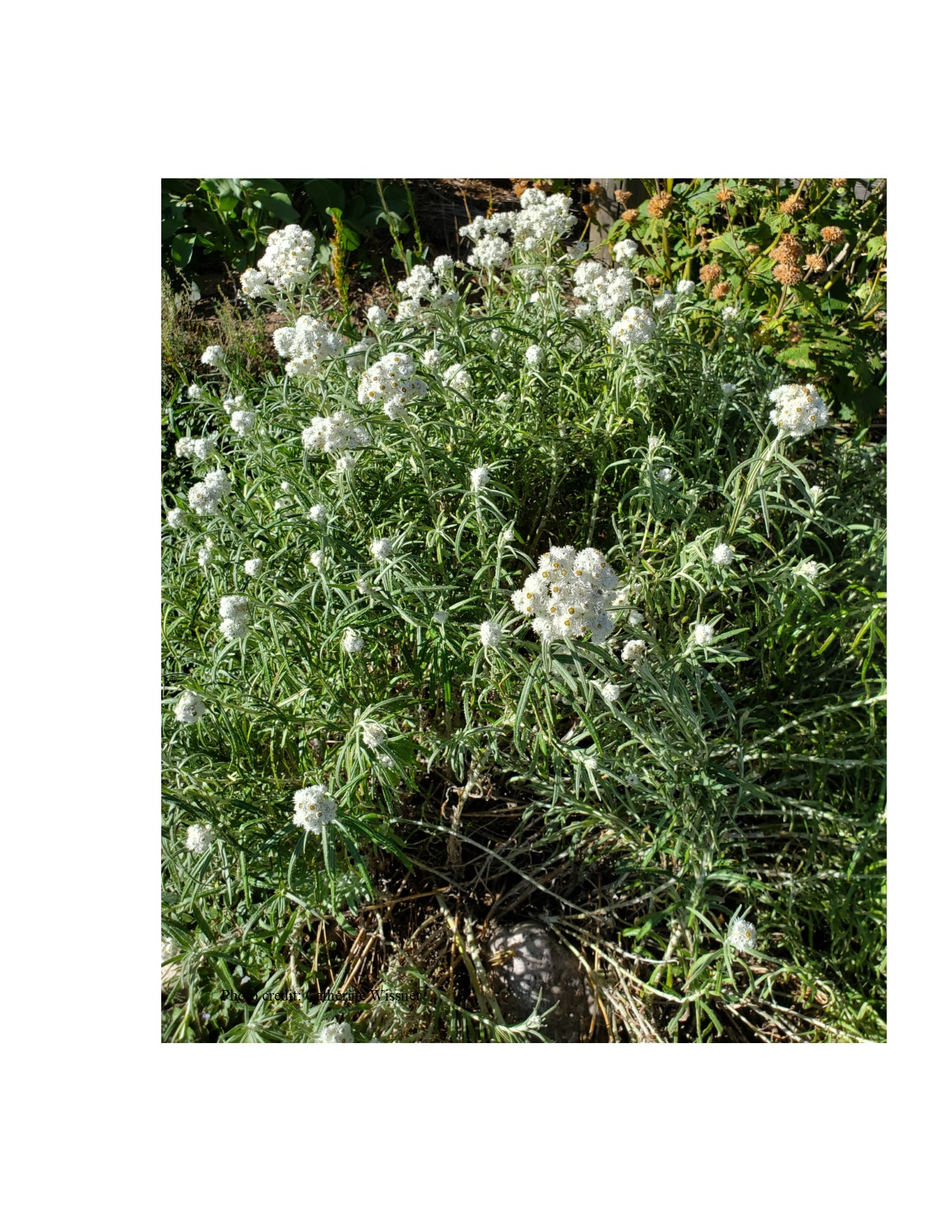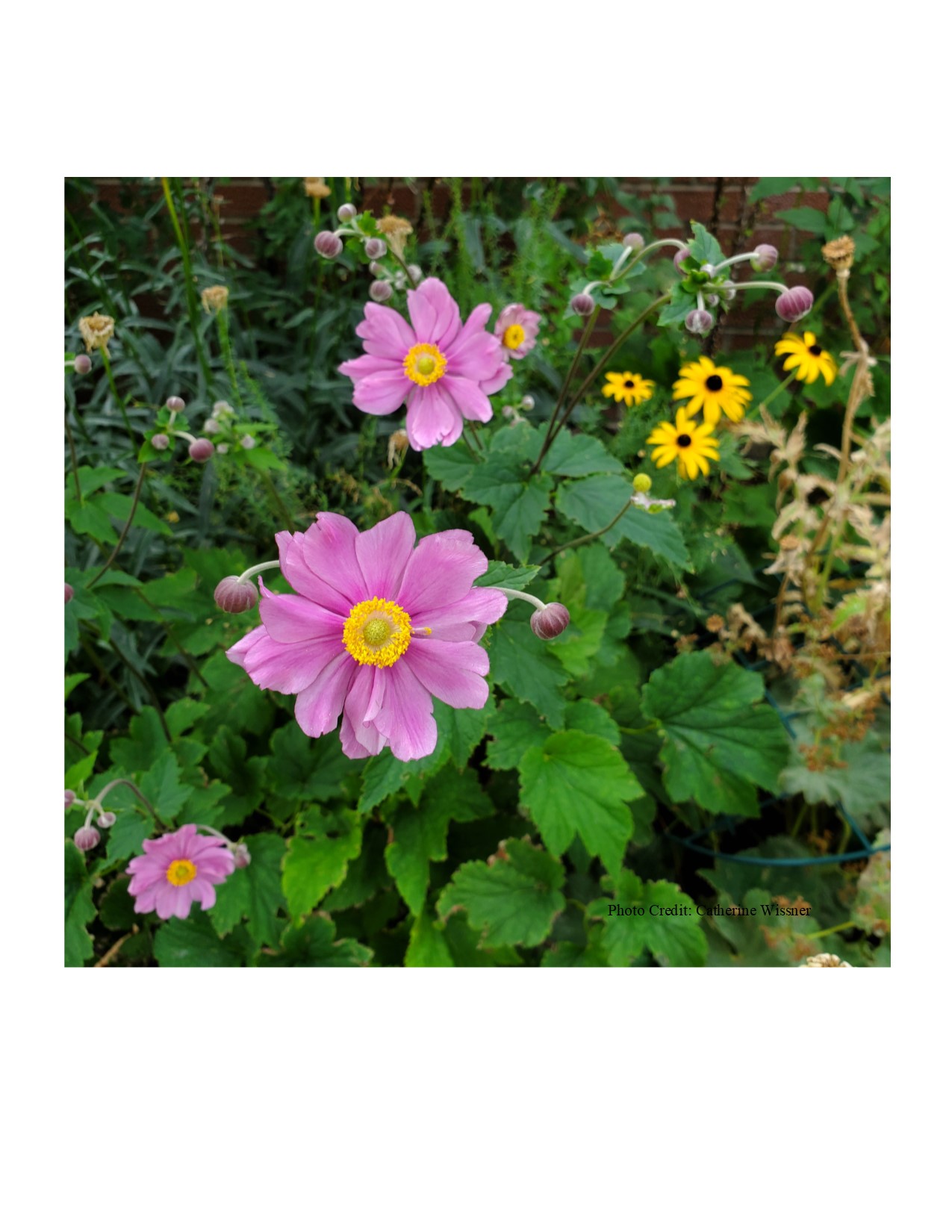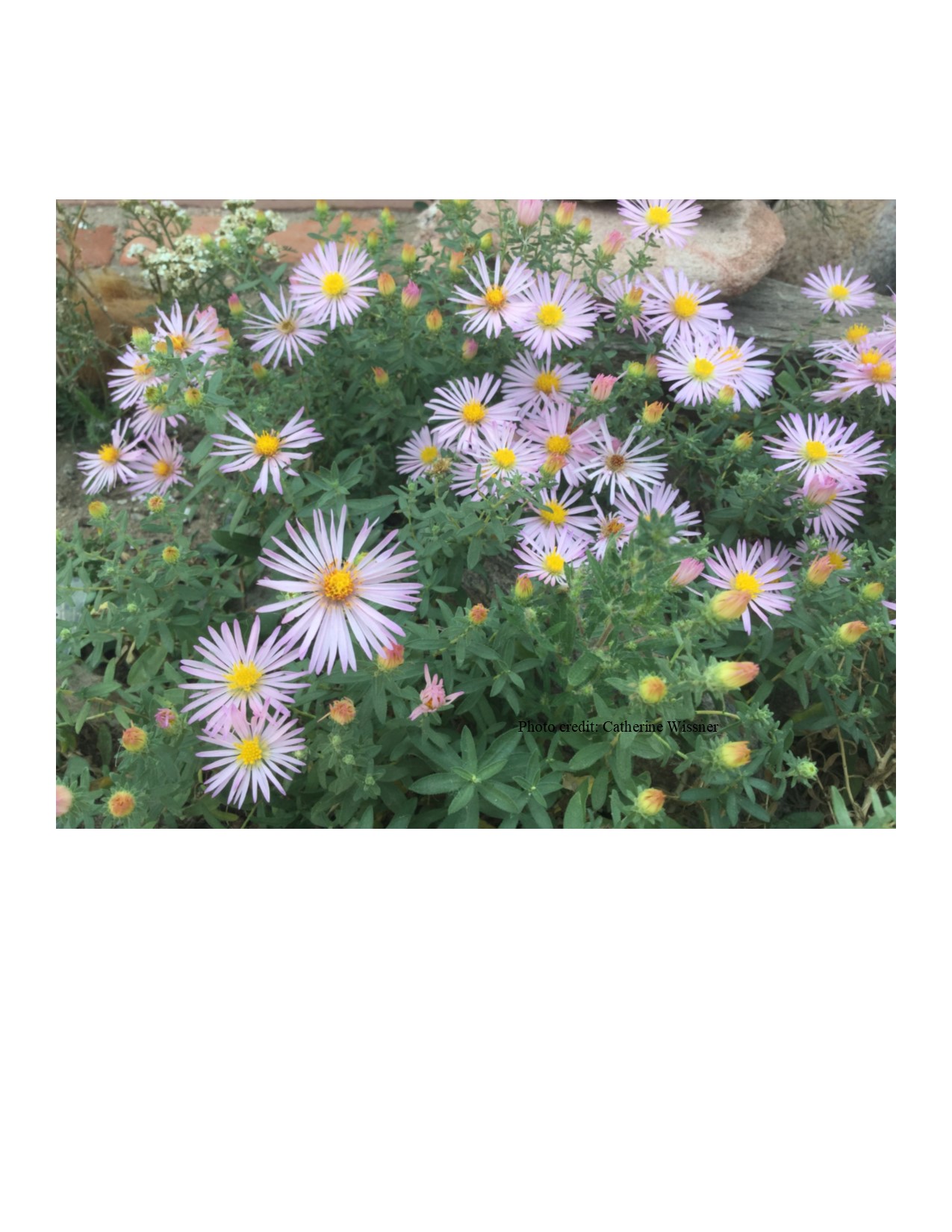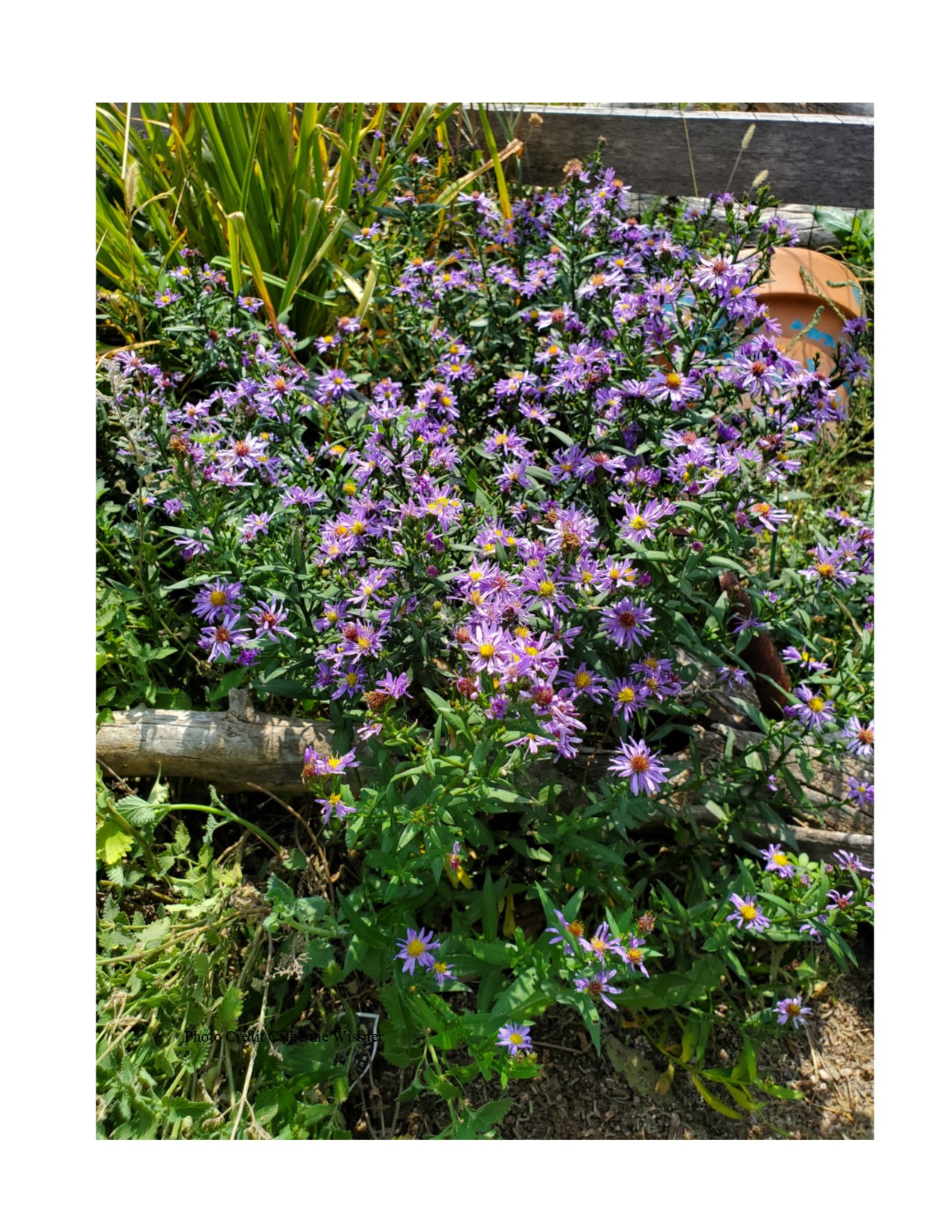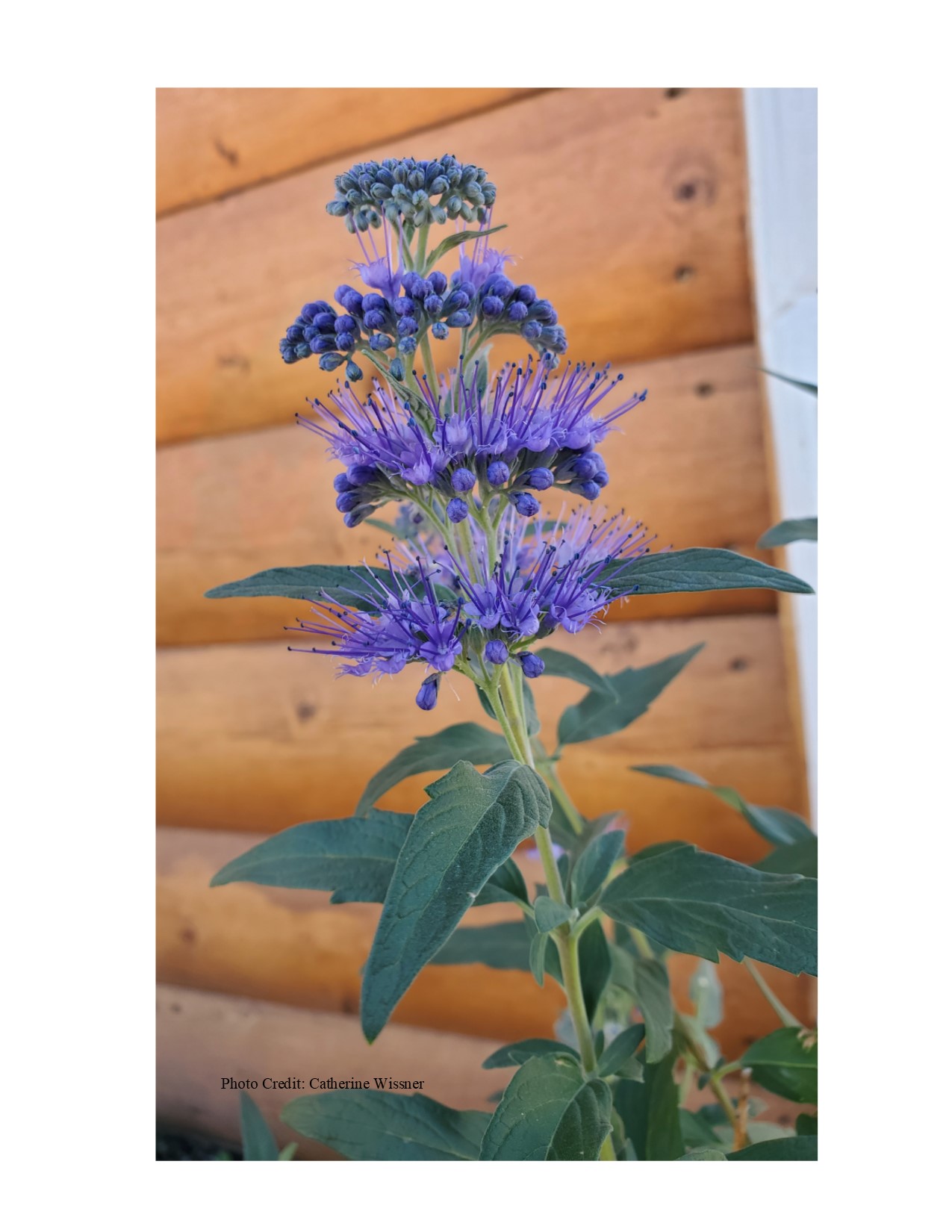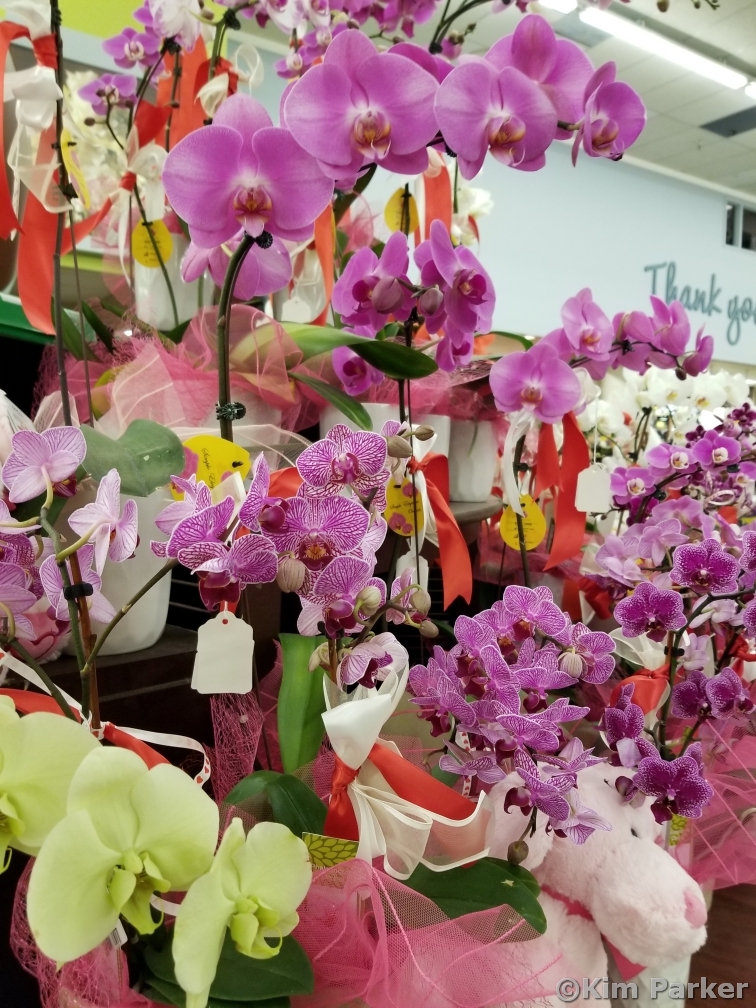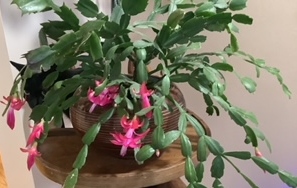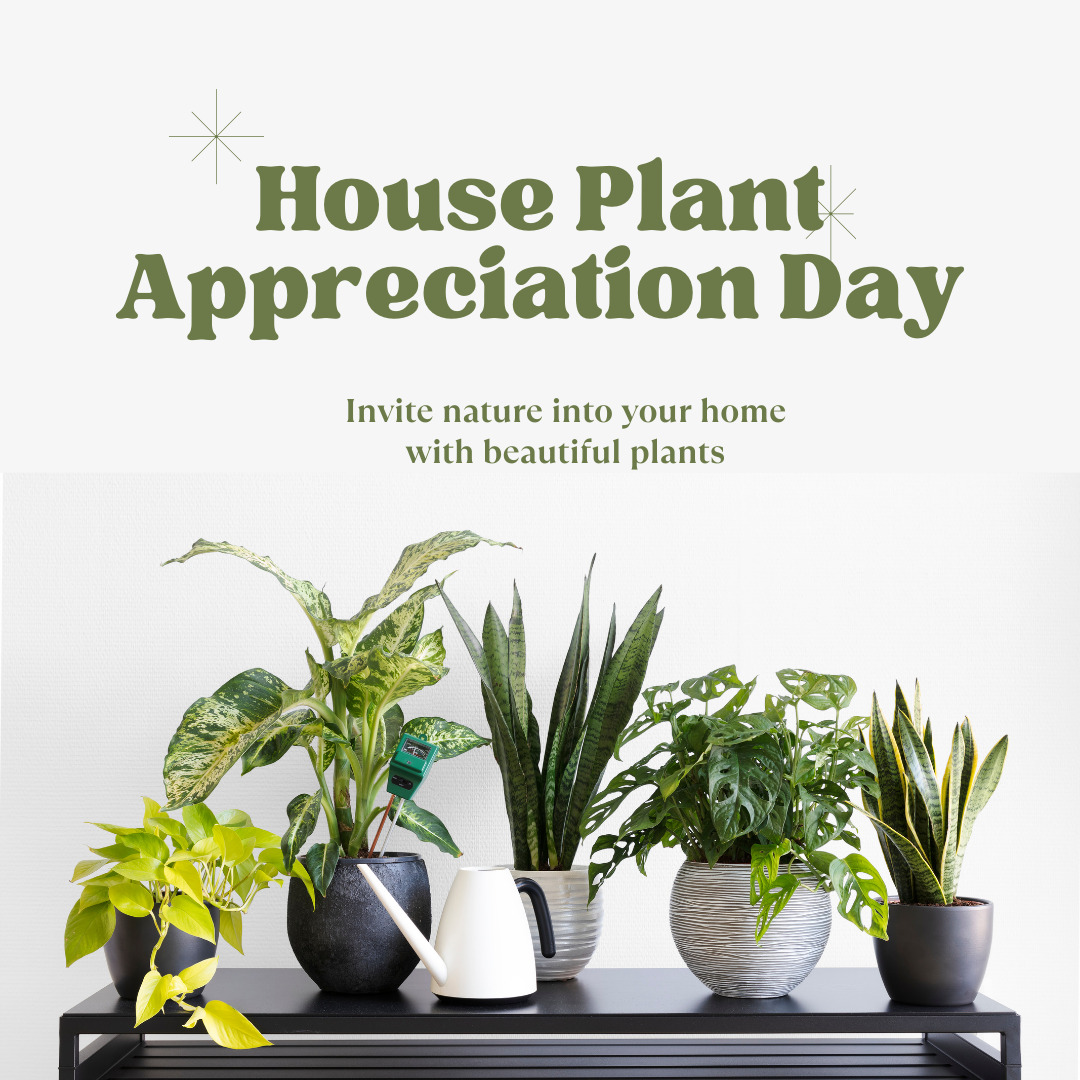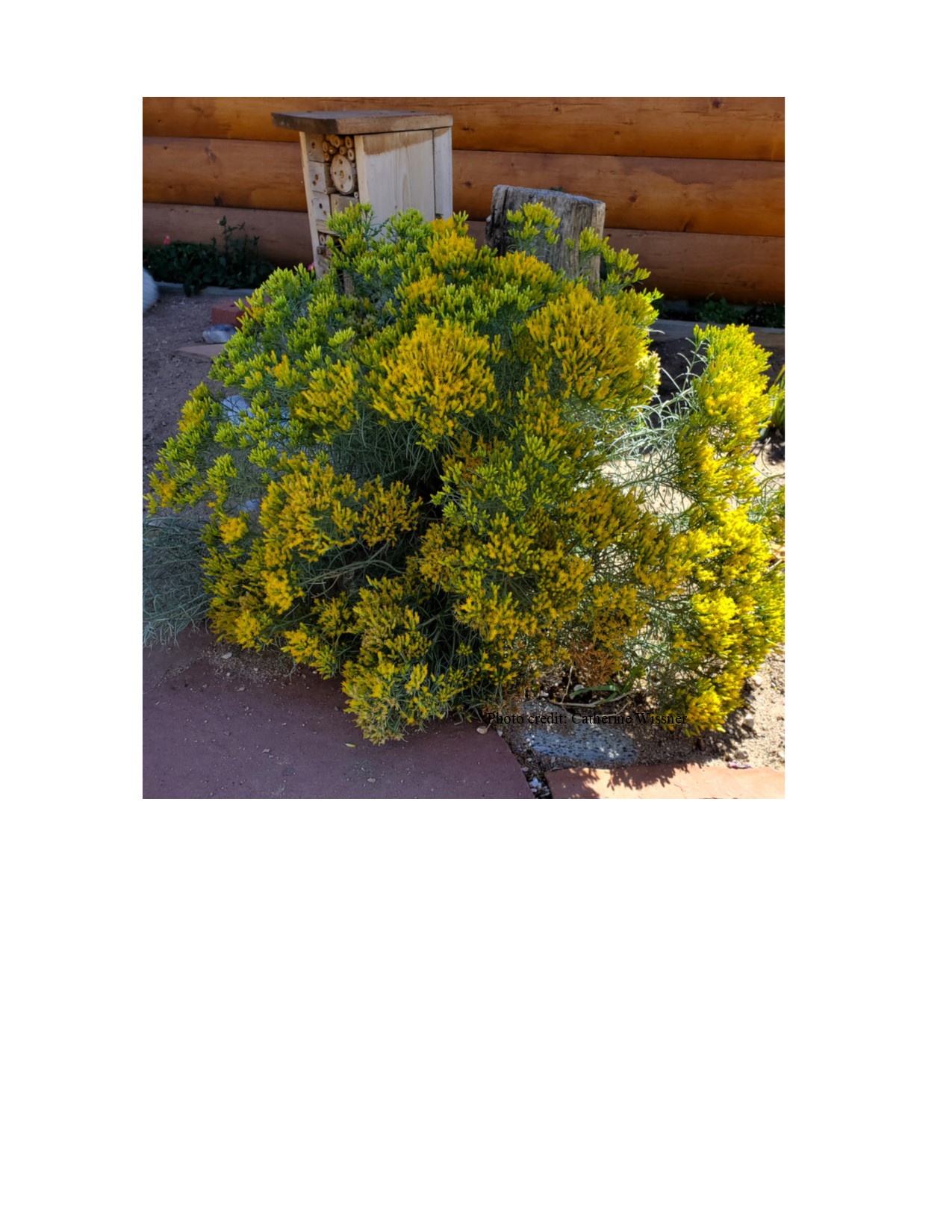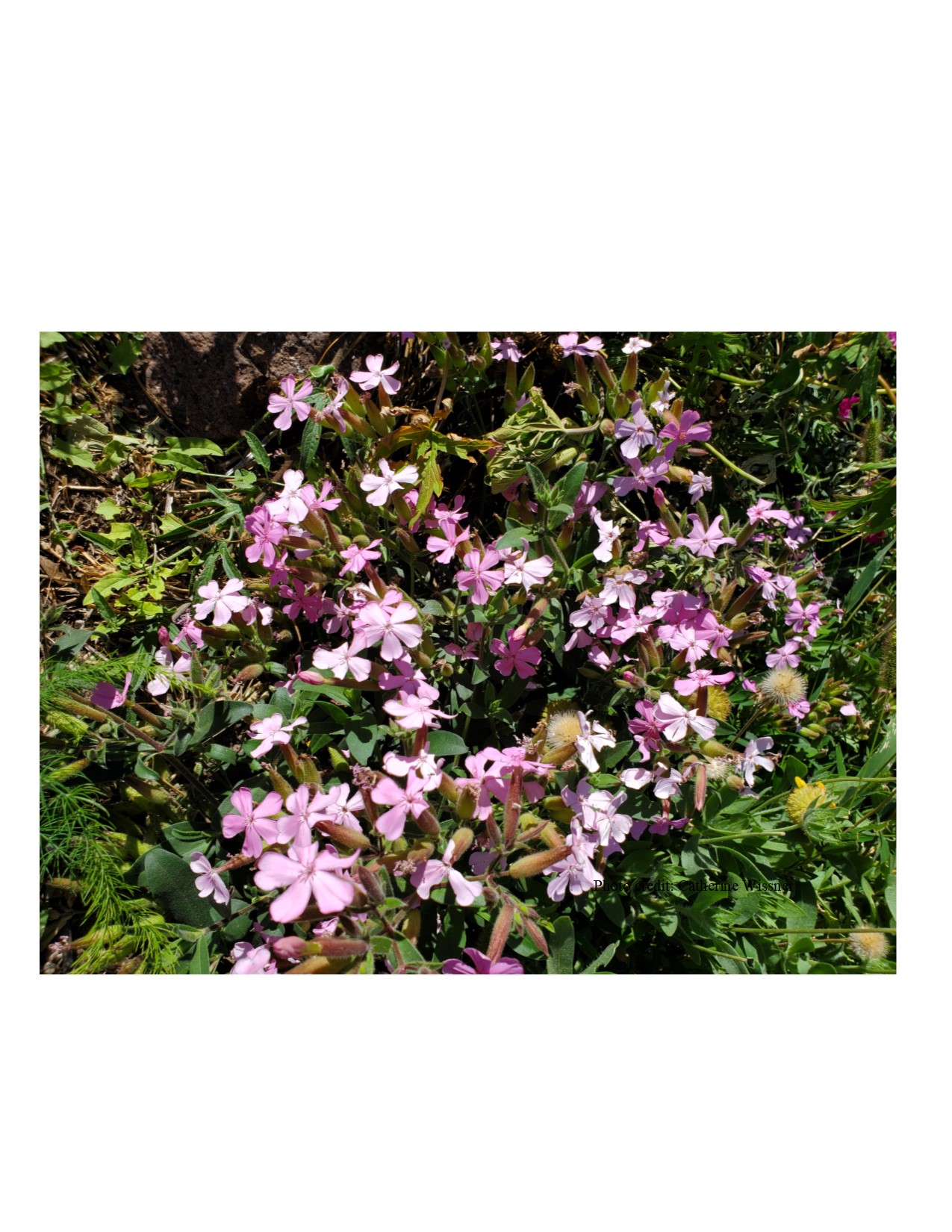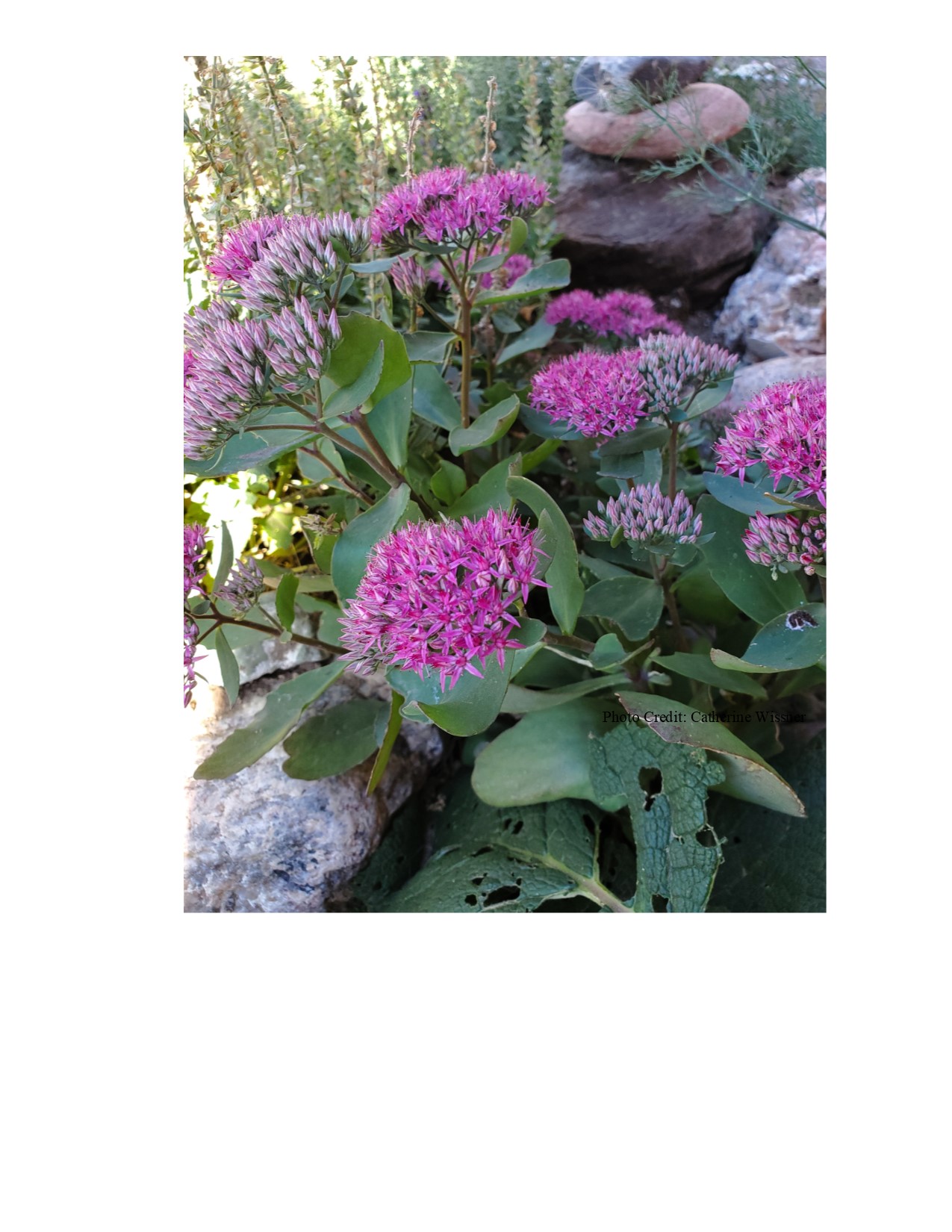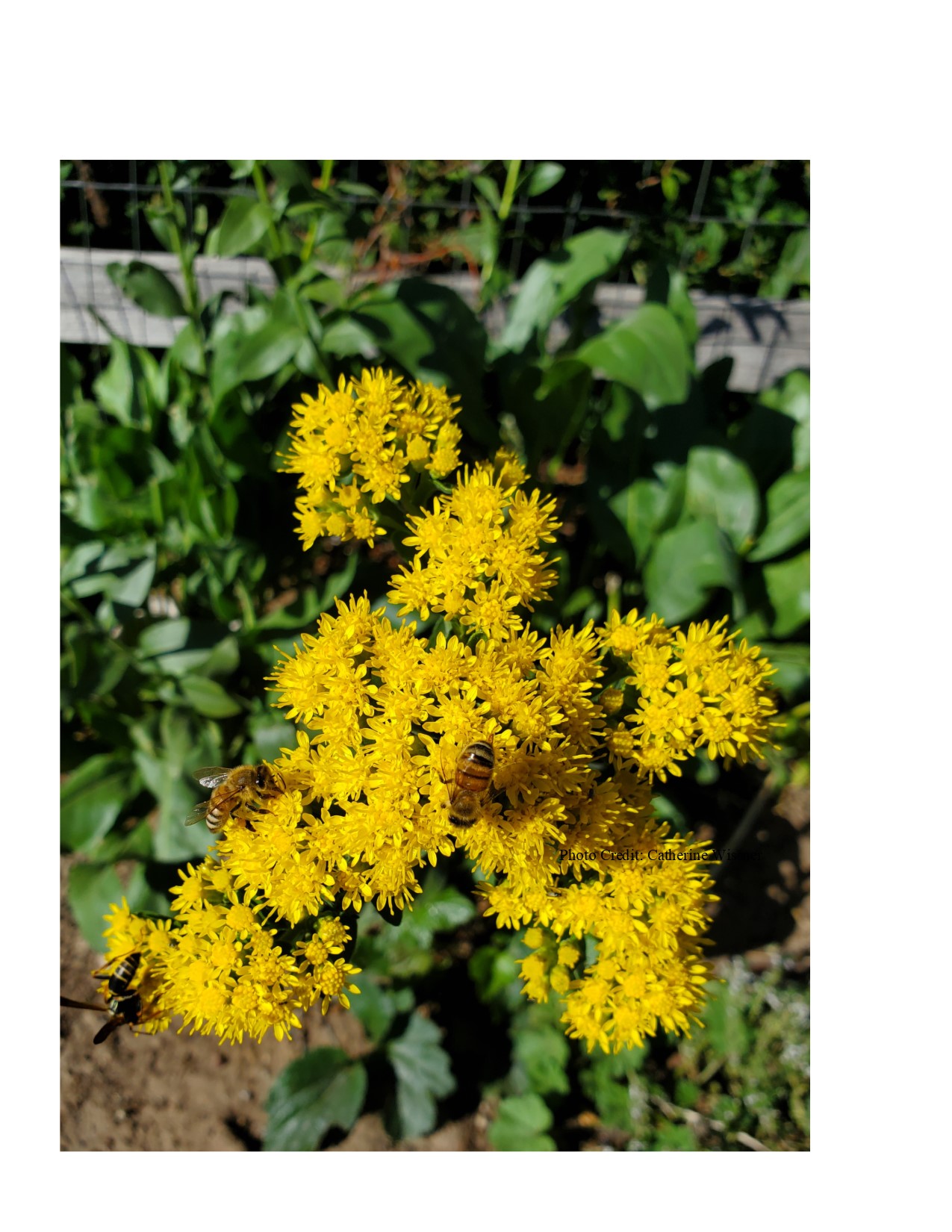Anaphalus margaritacea
It’s important to have flowers blooming from April to October. This late summer bloomer is one of the last flower restaurants open for bees and butterflies to feast on. Finally in full bloom Anaphalis “Pearly Everlasting” this perennial started to bloom in June and now September is in full bloom. This long lived hardy perennial good to 9,500 feet, grows 2 feet tall and as wide if not more. Has low water requirements likes’ full sun to some filtered shade. Another last restaurant open for native bees and butterflies.
Anemone tomentosa, Grape Leaved
It’s important to have flowers blooming from April to October. This late summer bloomer is one of the last flower restaurants open for bees and butterflies to feast on. Grape-leaved Anemone a true show stopper growing up to 3 feet tall with large pink flowers attracting butterflies. Hardy to 8,000 feet has medium water requirements will go from full sun to part shade, blooms August to frost. Another easy care easy to grow long lived perennial.
Aster, Pink Bouquet Dwarf
Pink Bouquet Dwarf Aster, just now blooming and survivor of the Sept 9, snow and cold. This dwarf Aster only grows to 15 inches with a 24 inch spread, hardy to 8,500 feet and has a medium water requirement. This sun lover blooms from September to mid fall, makes a nice cut flower and is loved by native bees and butterflies.
Aster, Prof Kippenburg
Dwarf Blue Fall Aster, another survivor of the Sept 9, snow and cold, this daisy like blue Aster has a yellow center and purple – blue petals. Grows up to 24 inches and as wide, easy care with medium water requirements. It can form a thick clump and can be used as a colorful fall blooming border. A fall blooming sun lover attracting native bees, butterflies and honey bees it can also be used as a cut flower.
Blue Mist Spirea
It’s important to have flowers blooming from April to October. This late summer bloomer is one of the last flower restaurants open for bees and butterflies to feast on. This blue flowering beauty is Caryopteris, Blue Mist Spirea. It can get 3-4 feet tall and as wide, has low water requirements, full sun, blooms from late August to a hard frost and is easy to grow.
Buy Orchids for Valentine’s Day!
— Author: Kim Parker, Laramie County Advanced Master Gardener Catleya Orchid, Photo Credit: Kim Parker On Valentine’s Day, think about giving a live plant with long-lasting blooms instead of cut flowers! Orchids are the second most popular flower and represent love, beauty, and refinement. They come in a dizzying array of colors and sizes. Orchids do well in our homes or offices and the flowers can last for several weeks or even months! Here are some easy tips to keep your orchids alive and reblooming for many years to come! Bring home a healthy plant!The best thing you can…
Christmas Cactus Care Recommendations
Photo Credit: C. Wissner So, you brought home a Christmas Cactus, and it didn’t have care instructions… Christmas cactus (Schlumbergera sp.) despite the common name they actually aren’t and need more water than you think. Not a true cactus, but they are a succulent, native to tropical rainforests, where they soak up the high humidity, filtered sunlight, and warm temperatures. I have several large Christmas cacti in my house, their favorite location is the east window. The location is cool, around 65 to 70 degrees and no drafts. They are near the bathroom, so they get extra humidity. My oldest, I inherited from my mother, who…
Houseplant Appreciation Day – January 10, 2024
Written By Marla Smith, Laramie County Master Gardener What is Houseplant Appreciation Day? Houseplant Appreciation Day is an annual event celebrated on January 10th, dedicated to recognizing and appreciating the beauty and benefits of houseplants. It’s a day to honor these green companions that bring life and vibrancy to our indoor spaces. Whether you have a small collection or a jungle-like oasis, Houseplant Appreciation Day is the perfect occasion to celebrate and care for your leafy friends. How to choose the right houseplant for your home My journey into indoor gardening began in high school when my sister gave…
Rabbitbrush
It’s important to have flowers blooming from April to October. This late summer bloomer is one of the last flowering restaurants open for bees and butterflies to feast on. This perennial dwarf blue Rabbitbrush is perfect for small flower beds, getting 2 feet tall and as wide, hardy to 8,500 feet, very low water requirements and a beautiful golden yellow from late August to early October. This scaled down native plant attracts native bees and butterflies in droves.
Saponaria x lempergii Max Frei
It’s important to have flowers blooming from April to October. This late summer bloomer is one of the last flower restaurants open for bees and butterflies to feast on. This pretty pink Rock Soapwort is great for rock and crevice gardens, only grows to 18 inches tall but can spread to 2 feet. Another low water user, hardy to 7,000 likes full sun and is easy to grow. Native bees and some butterflies like this plant.
Sedum Autumn Joy
It’s important to have flowers blooming from April to October. This late summer bloomer is one of the last flower restaurants open for bees and butterflies to feast on. This one is Sedum Autumn Joy or Stonecrop, easy to grow, likes full fun, has low water requirements, gets 18” tall and wide has flowers that fade to pink and is hardy to 8,000 feet.
Solidago rugosa Fireworks
It’s important to have flowers blooming from April to October. This late summer bloomer is one of the last flower restaurants open for bees and butterflies to feast on. Solidago rugose “fireworks” is the tallest of the Goldenrod family and can reach 3 feet tall with a 12 inch spread. It likes filtered shade is hardy to 6,500 feet, takes a bit more water has beautiful bright yellow flowers from late August to October. This is a great long lived perennial flower that feeds bees and butterflies.

